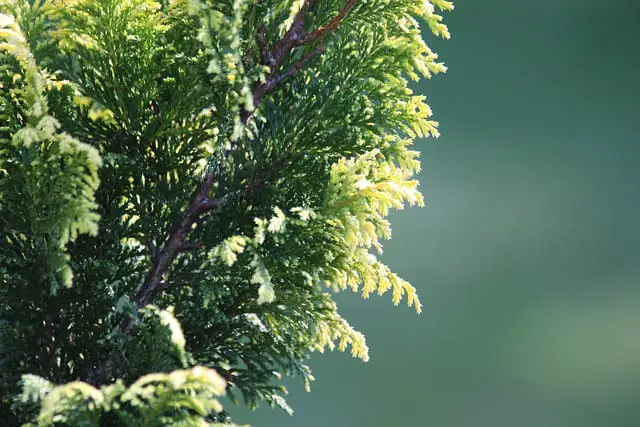Golden Mop False Cypress is a popular ornamental shrub that is prized for its striking golden foliage. However, if you notice that your Golden Mop False Cypress is turning brown, it could be a sign of a problem that needs to be addressed.
There are several reasons why this could be happening, and it’s important to understand the underlying cause in order to take the appropriate steps to remedy the situation.
One of the most common reasons why Golden Mop False Cypress turns brown is due to environmental factors such as overwatering, drought, or extreme temperatures.
However, there are also other factors such as pests, diseases, and nutrient deficiencies that can cause browning. By understanding the potential causes of browning, you can take steps to identify the specific issue and take the appropriate measures to address it.
Key Takeaways on Golden Mop False Cypress Turning Brown
- Golden Mop False Cypress turning brown can be caused by a variety of factors, including environmental factors, pests, diseases, and nutrient deficiencies.
- Proper watering is crucial for the health of Golden Mop False Cypress, as overwatering or underwatering can both cause browning.
- Identifying the specific cause of browning is key to addressing the issue and restoring the health of Golden Mop False Cypress.
Check out these other posts:
- Geogenanthus Ciliatus Leaves Turning Brown
- Flowers on Peace Lily Turning Brown
- Weigela Leaves Turning Brown
Understanding Golden Mop False Cypress
Golden Mop False Cypress, also known as Chamaecyparis pisifera, is a popular evergreen plant that belongs to the Cupressaceae family. This plant is native to Japan and is known for its beautiful golden foliage that adds a unique texture to any garden.
Golden Mop False Cypress is a dwarf tree variety that grows up to 2-5 feet tall and wide. It has a conical shape with dense, green foliage that turns golden yellow in the spring and summer. The plant produces soft, fine-textured evergreen needles that are arranged in a spiral pattern around the branches.
False cypress trees are generally easy to care for and can withstand a range of growing conditions. They prefer well-drained soil and full sun to partial shade.
Golden Mop False Cypress is a slow-growing plant, which means it requires minimal pruning. However, it may need to be pruned occasionally to maintain its shape and remove any dead or diseased branches.
Cypress trees are known for their pest resistance and disease tolerance. However, Golden Mop False Cypress may be susceptible to root rot if the soil is too wet.
It is important to ensure that the soil is well-drained and not too soggy. Additionally, the plant may turn brown if it is not receiving enough nutrients or if it is exposed to extreme temperatures.
Golden Mop False Cypress Turning Brown
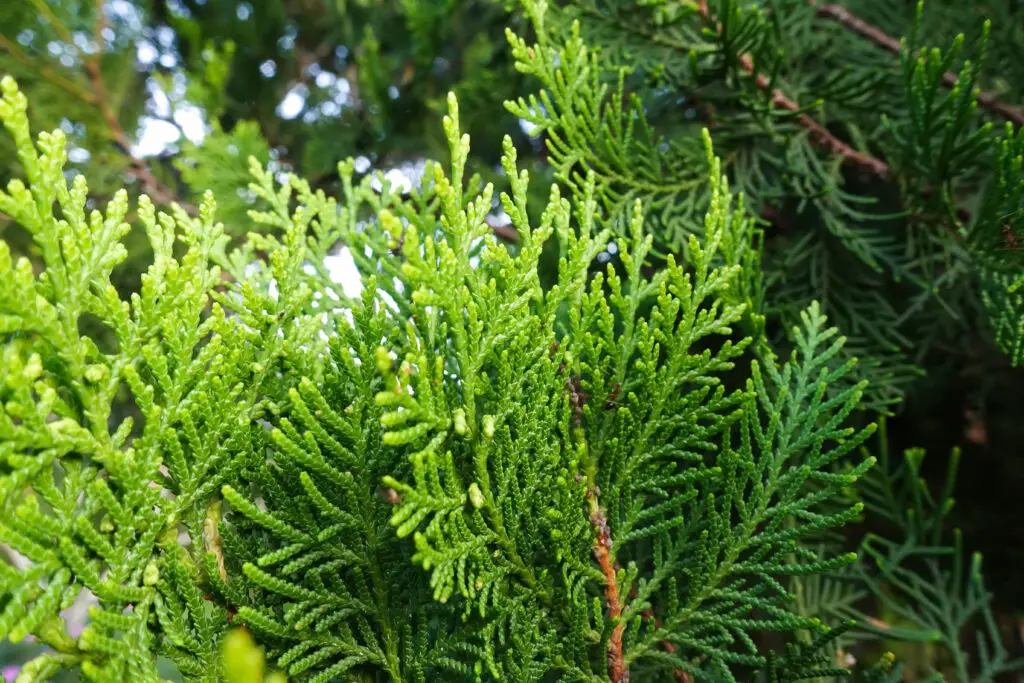
When a Golden Mop False Cypress turns brown, it is a sign that something is wrong. The first step in addressing the issue is to identify what is causing the problem. Here are some factors that may cause browning:
1. Damage
If the plant has been physically damaged, it may turn brown. Damage can be caused by anything from a lawnmower to an animal. Look for broken branches or other signs of physical damage.
2. Stress
Stress can also cause a Golden Mop False Cypress to turn brown. Stress can be caused by a variety of factors, including overwatering, underwatering, transplant shock, or extreme temperatures.
3. Dehydration
Dehydration is a common cause of browning in Golden Mop False Cypress. The plant may not be getting enough water, or the soil may be too dry. Check the soil moisture level by sticking your finger into the soil. If it feels dry, it’s time to water.
4. Pests and Diseases
Pests and diseases can also cause browning in Golden Mop False Cypress. Common pests include spider mites, scale insects, and aphids. Diseases such as juniper twig blight can also cause browning.
Role of Environmental Factors
Golden Mop False Cypress is a hardy plant that can tolerate a range of environmental conditions. However, certain factors can cause it to turn brown. In this section, we will discuss the role of environmental factors in the browning of Golden Mop False Cypress.
1. Soil

Golden Mop False Cypress prefers well-draining soil that is moist but not waterlogged. Soil that is too wet can cause root rot, which can lead to browning of the foliage.
On the other hand, soil that is too dry can cause the plant to become stressed, which can also lead to browning. It is important to maintain the right moisture level in the soil by watering the plant regularly and providing good drainage.
2. Sunlight
Golden Mop False Cypress prefers full sun to partial shade. Direct sunlight is necessary for the plant to grow and thrive.
However, too much direct sunlight can cause the plant to become stressed, which can lead to browning of the foliage. If the plant is not getting enough sunlight, it may also turn brown. It is important to ensure that the plant is getting enough sunlight but is not being exposed to too much direct sunlight.
3. Temperature
Golden Mop False Cypress can tolerate a range of temperatures. However, extreme temperatures can cause the plant to become stressed, which can lead to browning of the foliage.
If the plant is exposed to temperatures that are too hot or too cold, it may turn brown. It is important to ensure that the plant is growing in an environment with a moderate temperature range.
4. Moisture
Golden Mop False Cypress requires moist soil to grow and thrive. If the soil is too dry, the plant may turn brown. It is important to water the plant regularly and ensure that the soil is moist but not waterlogged. Mulch can also help retain moisture in the soil.
5. Soil Type
Golden Mop False Cypress can grow in a range of soil types, including sand, loam, and clay. However, the soil must be well-draining to prevent root rot and other moisture-related problems. It is important to ensure that the soil is suitable for the plant and provides good drainage.
Importance of Watering
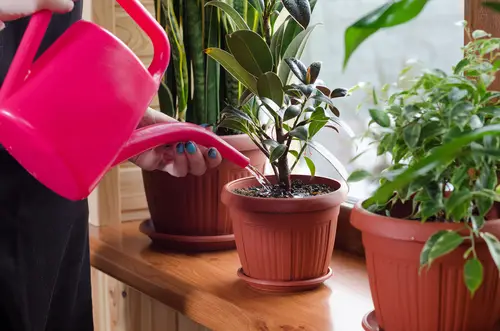
Golden Mop False Cypress is a drought-tolerant plant, but it still needs proper watering to stay healthy and vibrant. Watering is a crucial factor in the growth and development of Golden Mop False Cypress. Proper watering can prevent browning of the leaves and maintain the plant’s overall health.
Overwatering can lead to root rot, which is a common problem for Golden Mop False Cypress. On the other hand, underwatering can cause the leaves to dry out and turn brown. It is essential to understand the watering needs of the plant to avoid these problems.
Golden Mop False Cypress requires moderate watering, and it is crucial to maintain a consistent watering schedule. The plant needs to be watered deeply but infrequently. The soil should be allowed to dry out between watering sessions.
To determine if the plant needs watering, one can check the soil moisture level. The soil should be moist but not waterlogged. One can also check the plant’s leaves for signs of dehydration. If the leaves are wilting, it is an indication that the plant needs water.
It is essential to water the plant in the morning as it allows the water to evaporate before the evening, reducing the risk of fungal growth.
Impact of Diseases and Pests
Golden Mop False Cypress is susceptible to various diseases and pests that can cause the foliage to turn brown. Identifying the cause of the problem is essential to save the plant. Here are some of the most common diseases and pests that affect Golden Mop False Cypress:
Diseases
- Root rot: Overwatering can cause the soil to become waterlogged, leading to root rot. The roots will start to decay, and the plant will not be able to absorb nutrients and water efficiently. This can cause the foliage to turn brown and eventually die. To prevent root rot, ensure that the soil is well-draining and only water the plant when the top inch of soil is dry.
- Fungal infections: Various fungal infections, such as cankers and juniper blight, can cause the foliage to turn brown. Fungal spores can spread through the air, water, or soil, infecting the plant’s tissue. To prevent fungal infections, ensure that the plant has good air circulation and avoid overhead watering.
Pests
- Spider mites: These tiny pests can suck the sap from the plant’s leaves, causing them to turn brown and eventually fall off. Spider mites thrive in hot and dry conditions, so ensure that the plant is well-hydrated and mist the foliage regularly to increase humidity.
- Aphids: These sap-sucking insects can cause the foliage to turn yellow and eventually brown. They secrete a sticky substance called honeydew, which can attract other pests and cause fungal infections. To prevent aphids, spray the plant with a strong jet of water to dislodge them or use insecticidal soap.
- Tip miners: These pests tunnel into the foliage, causing brown patches and distorted growth. They can be difficult to control, so it’s best to remove and destroy infected parts of the plant and use insecticidal soap.
Nutrient Deficiencies and Their Effects
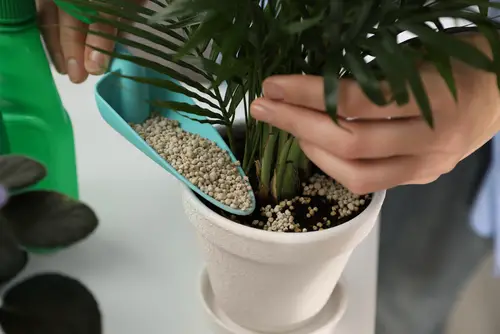
Golden Mop Cypress is a low-maintenance plant that is easy to grow and care for. However, it is not immune to nutrient deficiencies, which can cause its leaves to turn brown.
Nutrient deficiencies occur when a plant does not receive the necessary nutrients from the soil. Here are some of the most common nutrient deficiencies that can affect the Golden Mop Cypress and their effects.
Nitrogen Deficiency
Nitrogen is one of the most important nutrients for plants, and a lack of it can cause stunted growth and yellowing of leaves. In the case of Golden Mop Cypress, a nitrogen deficiency can cause the plant to turn brown and lose its vibrant color. To remedy this, fertilizer with a high nitrogen content can be applied to the soil.
Lack of Iron
Iron is another essential nutrient for plants, and a deficiency can cause chlorosis, a condition where the leaves turn yellow or white. In Golden Mop Cypress, a lack of iron can cause the plant to turn brown and lose its color. To fix this, iron chelate can be added to the soil or applied as a foliar spray.
Other Nutrient Deficiencies
Other nutrient deficiencies that can cause Golden Mop Cypress to turn brown include:
- Magnesium deficiency: can cause yellowing between leaf veins
- Calcium deficiency: can cause stunted growth and leaf tip burn
- Sulfur deficiency: can cause yellowing of leaves
To prevent nutrient deficiencies, it is important to ensure that the soil is rich in organic matter. Compost can be added to the soil to improve its nutrient content. Additionally, regular fertilization can help ensure that the plant receives all the necessary nutrients.
Proper Pruning and Growth
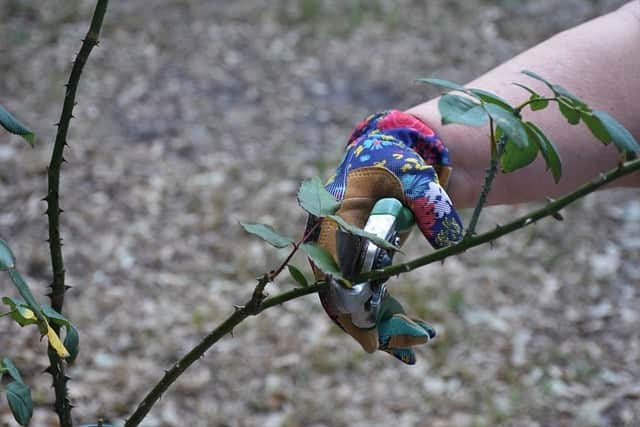
Golden mop false cypress can benefit from proper pruning to maintain healthy growth and prevent browning. Pruning should be done when there is uneven growth, straggly tips, or diseased branches.
Over-pruning should be avoided as it can shade the inner branches and foliage, resulting in outer growth that is healthy and inner growth that turns brown and starts to fade.
The best time of year to prune a golden mop false cypress is at the end of winter or in early spring, just as the plant is waking up. However, pruning can be done at any time from spring through midsummer. Pruning during the growing season allows the shrub to produce new, green foliage that will cover any pruning scars.
When pruning, it is important to use proper techniques to promote healthy growth. Avoid cutting branches too close to the trunk or leaving stubs, as this can lead to disease or insect infestations. Instead, make clean cuts just above a healthy bud or lateral branch.
Golden mop false cypress is a slow-growing shrub, so it is important to prune it regularly to encourage new growth. Pruning can also help to shape the shrub and prevent it from becoming too large or unruly.
In addition to pruning, proper growth conditions are important for maintaining healthy golden mop false cypress. This shrub thrives in full sun but can be grown in partial shade.
Gold varieties require more sunshine to develop their famous coloring. They do best in slightly acidic, moist, well-draining soil and thrive in soil amended with compost.
Container and Potting Considerations
Golden Mop False Cypress can be grown in containers, making them ideal for patios, balconies, and other small spaces. When planting in containers, it is important to consider the size of the pot.
The pot should be large enough to accommodate the root system of the plant and allow room for growth. A pot that is too small can cause the plant to become root-bound, which can lead to stunted growth and poor health.
When selecting a container, it is important to choose one with good drainage. A container with drainage holes will allow excess water to drain away, preventing the soil from becoming waterlogged.
This is important because Golden Mop False Cypress does not tolerate wet feet and can develop root rot if the soil remains too wet for too long.
When potting Golden Mop False Cypress, it is important to use a well-draining potting mix. A mix that is too heavy can retain too much moisture, which can lead to root rot. A mix that is too light can dry out too quickly, which can cause the plant to become stressed and turn brown.
Golden Mop False Cypress can be propagated from cuttings using rooting hormone. When propagating in containers, it is important to use a small container with good drainage. The container should be filled with a well-draining potting mix, and the cutting should be inserted into the soil and watered thoroughly.
Prevention and Care Measures
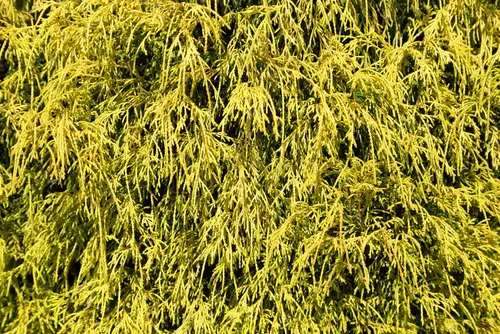
Golden Mop False Cypress turning brown can be a frustrating problem for gardeners. Fortunately, there are a few prevention and care measures that can be taken to keep these shrubs healthy and vibrant.
1. Drought Prevention
One of the main reasons why Golden Mop False Cypress turns brown is due to drought. These shrubs require moist soil to thrive, so it’s important to ensure that they receive adequate water.
Gardeners should water their Golden Mop False Cypress deeply and regularly, especially during hot and dry weather conditions. A good rule of thumb is to water the shrubs once or twice a week, depending on the weather and soil conditions.
2. Pruning and Maintenance
Regular pruning and maintenance is also crucial for preventing Golden Mop False Cypress from turning brown. Gardeners should remove any dead or diseased branches as soon as they are noticed. This will help prevent the spread of disease and keep the shrubs looking healthy and vibrant.
3. Choosing the Right Shrubs
Choosing the right shrubs is also important for preventing Golden Mop False Cypress from turning brown. Some varieties of these shrubs are more resistant to disease and drought than others. For example, the Golden Mop False Cypress Nana is a dwarf variety that is more resistant to drought and disease than other varieties.
4. Soil Health
Soil health is also crucial for preventing Golden Mop False Cypress from turning brown. Gardeners should ensure that the soil is well-draining and rich in nutrients. Adding organic matter, such as compost or manure, can help improve soil health and prevent the shrubs from turning brown.
5. Gray Mold Prevention
Gray mold is a common disease that can affect Golden Mop False Cypress. Gardeners should take steps to prevent this disease by keeping the shrubs dry and free from excess moisture.
Avoid overhead watering and ensure that the soil is well-draining. If gray mold is detected, affected branches should be pruned and removed immediately to prevent the disease from spreading.
Frequently Asked Questions
How to shape Gold mop cypress
To shape a Golden Mop Cypress, prune the tips of the branches in the spring. This will encourage the plant to grow fuller and more compact. You can also selectively prune branches that are growing too long or out of shape.
Pruning overgrown Golden Mop cypress
If your Golden Mop Cypress has become overgrown, you can prune it back in the spring. Cut back the longest branches to the desired length, making sure to leave some green foliage on each branch.
Avoid cutting back into the brown inner part of the branch, as this may not produce new foliage.
When to prune Golden Mop cypress
The best time to prune a Golden Mop Cypress is in the spring, just before new growth begins. This will give the plant time to recover from pruning and produce new growth during the growing season.
Golden Mop cypress propagation
Golden Mop Cypress can be propagated by taking stem cuttings in the summer. Cut a stem that is 4-6 inches long, remove the lower leaves, and dip the cut end in rooting hormone. Plant the cutting in a pot with well-draining soil and keep it moist. After a few weeks, roots should start to form.
Does Golden Mop false cypress like sun or shade?
Golden Mop Cypress prefers full sun, but can tolerate some shade. If the plant is placed in too much shade, it may start to discolor and lose some leaves.
What to do when cypress trees turn brown?
If your Golden Mop Cypress is turning brown, it could be due to a pest problem or disease. One common disease is juniper twig blight, which can attack junipers and other cedars and False Cypresses.
To treat this, prune out the affected branches and dispose of them. You can also apply a fungicide to the plant to prevent further damage.

Hey, I’m Lisa and I’ve been an avid gardener for over 30 years. I love writing, talking and living in the garden! Feel free to connect with me on my socials below

